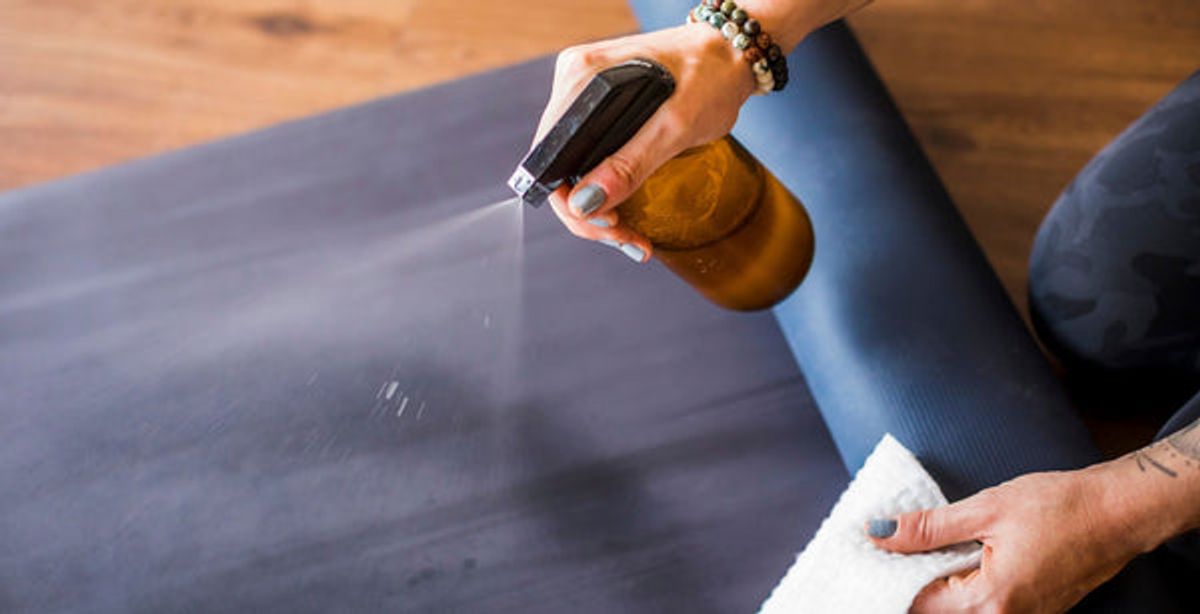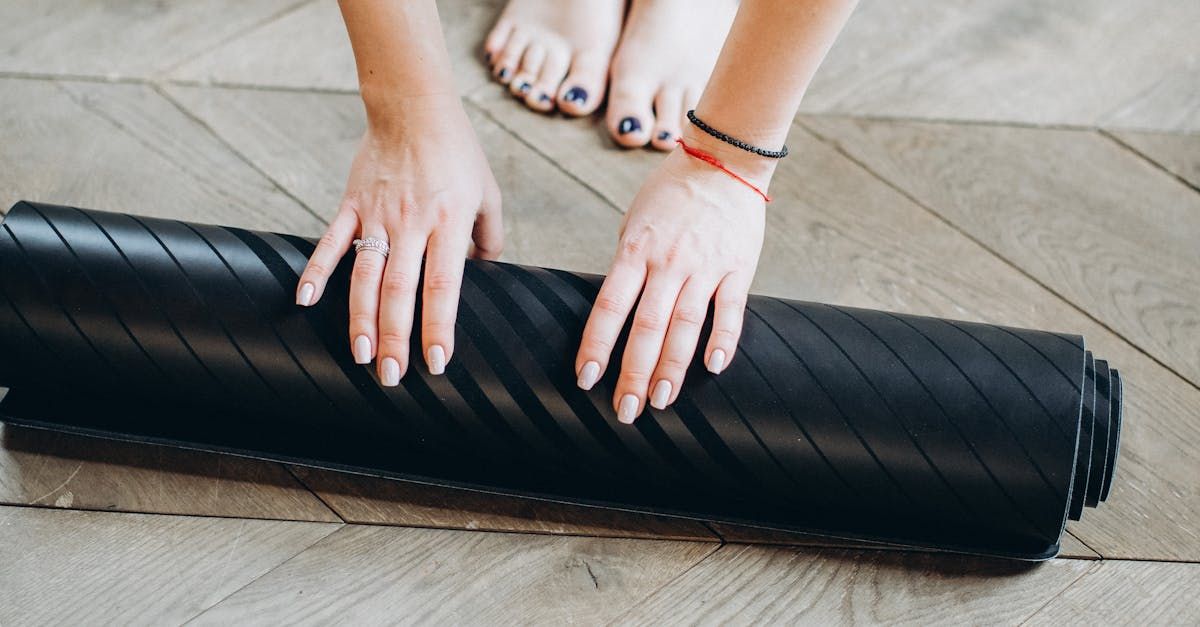
5 Easy Steps to Deep Clean Your Yoga Mat
Maintaining the cleanliness of your yoga mat is crucial for both hygiene and longevity. A clean mat ensures a more pleasant practice and helps prevent the build-up of bacteria and odors. In this article, we'll guide you through 5 easy steps to deep clean your yoga mat using simple household items. Whether you're a seasoned yogi or a beginner, these steps will help you keep your mat fresh and sanitary.
Key Takeaways
- Use mild dish soap to gently cleanse the surface of your yoga mat without damaging it.
- A microfiber cloth is ideal for wiping down the mat as it effectively removes dirt while being gentle on the material.
- Baking soda can be used to deodorize the mat and tackle any lingering smells.
- Essential oils can provide a pleasant fragrance and may offer antimicrobial properties, depending on the oil used.
- A spray bottle allows for even distribution of cleaning solutions and makes the cleaning process more efficient.
1. Mild Dish Soap
Begin the deep cleaning process by using a solution of mild dish soap and water. This gentle yet effective combination will help remove dirt and oils without damaging the mat's material.
- Wet the mat with clean water.
- Add a few drops of dish soap to a small bucket of water.
- Use a soft cloth to wipe the mat's surface in circular motions.
Ensure the soap is thoroughly rinsed off to prevent any slippery residue.
After cleaning, hang the mat to air dry, avoiding direct sunlight which can degrade the material. Regularly cleaning your yoga mat with natural ingredients helps maintain hygiene, prevent bacteria growth, and extend mat lifespan.
2. Microfiber Cloth
After applying a mild dish soap solution to your yoga mat, it's time to gently scrub the surface. Use a microfiber cloth for this task, as its fine fibers are perfect for picking up dirt and absorbing moisture without damaging the mat's material.
Microfiber cloths are designed to be non-abrasive and highly absorbent, making them ideal for cleaning delicate surfaces. Here's how to effectively use one:
- Dampen the microfiber cloth with the soapy water.
- Gently scrub the mat in circular motions, focusing on any dirty spots.
- Rinse the cloth frequently to avoid spreading dirt.
- After scrubbing, use a dry microfiber cloth to wipe the mat down.
Ensure the mat is completely dry before rolling it up to prevent mold and mildew growth. Air-drying is best, as it allows any remaining moisture to evaporate.
3. Baking Soda
Baking soda is a powerful natural cleaning agent that can help deodorize and cleanse your yoga mat. To use, sprinkle a generous amount of baking soda over the surface of your mat and let it sit for a few minutes.
After the baking soda has had time to absorb odors and lift dirt, gently scrub the mat with a damp cloth. This will help to properly wash your yoga mat, ensuring a fresh and hygienic practice surface.
Finally, rinse the mat with clean water to remove any residue. Make sure to hang the mat up to dry completely before rolling it up again. Pay extra attention to heavily soiled areas to maintain the cleanliness and longevity of your mat.
4. Essential Oils
Adding essential oils to your yoga mat cleaning routine can not only help with the cleaning process but also enhance your yoga experience with therapeutic aromas. Choose oils that are known for their antibacterial properties, such as tea tree, lavender, or eucalyptus. Here's a simple guide to using essential oils on your yoga mat:
- Begin by selecting your preferred essential oil. Consider the ASUTRA Yoga Mat Cleaner Spray (Peaceful Lavender) for a ready-to-use option.
- Add a few drops of the oil to your cleaning solution or directly onto the microfiber cloth.
- Gently wipe the mat, allowing the natural properties of the oils to disinfect and deodorize.
When using essential oils, it's important to dilute them properly to avoid damaging the mat's surface. A small amount goes a long way in keeping your mat fresh and clean.
5. Spray Bottle
Having a dedicated spray bottle for your yoga mat cleaning solution is not only convenient but also promotes regular use. Fill the bottle with a mixture of water and a few drops of essential oils for a refreshing scent and antimicrobial properties.
To prepare your cleaning solution, follow these simple steps:
- Fill the spray bottle with water, leaving a little space at the top.
- Add a teaspoon of mild dish soap.
- Drop in 1/4 teaspoon of baking soda.
- Include 5-10 drops of your favorite essential oil.
Shake the bottle gently to mix the ingredients. After each yoga session, lightly mist your mat and wipe it down with a microfiber cloth. This will help to keep your mat clean and extend its lifespan.
For daily cleaning, it might be easiest to pre-mix a natural cleaning solution in a spray bottle for easily spraying your mat after your workout.
Discover the ultimate convenience in your yoga practice with our versatile Spray Bottle, perfect for keeping your yoga mat fresh and clean. Don't let a slippery mat disrupt your flow; a quick spritz can make all the difference. Visit our website now to explore our range of yoga accessories and take the first step towards a more focused and enjoyable yoga experience. Your ideal yoga session is just a click away!
Conclusion
Maintaining a clean yoga mat is essential for a hygienic practice and to extend the life of your mat. By following the five easy steps outlined in this article, you can ensure that your mat remains a safe and comfortable space for your yoga sessions. Regular cleaning not only removes dirt and bacteria but also preserves the mat's grip and texture. Remember to use gentle, non-abrasive cleaners and to allow your mat to dry completely before rolling it up. With these simple practices, your yoga mat can continue to support your journey toward wellness and tranquility.
Frequently Asked Questions
How often should I deep clean my yoga mat?
It's recommended to deep clean your yoga mat every few months, or more frequently if you practice yoga daily or the mat becomes noticeably dirty or smelly.
Can I use hot water with the mild dish soap for cleaning?
It's best to use warm water rather than hot, as high temperatures can damage the material of some yoga mats.
What type of microfiber cloth should I use?
Use a soft, non-abrasive microfiber cloth to avoid scratching or damaging the surface of your yoga mat.
How does baking soda help in cleaning my yoga mat?
Baking soda is a natural deodorizer and can help in removing odors as well as providing a gentle abrasive to help scrub away stains and dirt.
Which essential oils are best for cleaning a yoga mat?
Tea tree, lavender, and eucalyptus oils have natural antibacterial properties and can leave your mat smelling fresh. However, ensure they are properly diluted to avoid damaging the mat.
How do I properly use a spray bottle for cleaning my yoga mat?
Fill the spray bottle with a cleaning solution made from water and a few drops of mild dish soap or essential oils. Lightly spray the mat, then wipe it down with the microfiber cloth.


